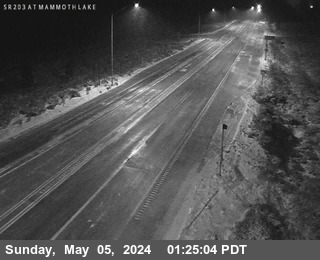Brought to you by Howard Sheckter
Mono Wind Event Set for the West Side of the Sierra Sunday Night…..Smoke to Begin Clearing Sunday Morning…However, Models are slower with NE flow developing…Now not untill this evening……Colder Weather Ahead…
Friday October 23, 2020
Sunday 11:40AM
12Z WRF is slower to back the flow out of the NNE today. The latest guidence pushes it back to between 5:00PM and 8PM Sunday tonight. Good news is that once the NE flow sets in, It should be around through Wednesday Evening…
Looking at a cold night tonight with lows in town between 10 and 15 degrees. For the most part, the Dweebs do not think it will be much colder, except for the lowest elevations in town, where the coldest air usually is.
Outlook is Dry Dry Dry!!!
The Dweeber…
___________________________________________________________________________________________________________________________________________________________________________________
Saturday 1:00PM
Still Smoky in Mammoth with Hazardous Air Quality. Air Quality expected to be greatly improved by Mid to Late Morning Sunday.
La Nina now expected to be Moderate to Strong this winter. Atmosphere over the Tropical Pacific has coupled to the cold phase. A Full Basin La Nina is forecasted to last all Winter. Cold SSTAs now stretch from the Central American Coast to 160 East. This will most likely confine The MJO’s strength to the Western Pacific, as once it moves over the anomalously colder waters of Central Pacific, tropical forcing will tend to weaken rapidly, due to the cold La Nina base state with Destructive Phasing the most likely outcome. This pretty much keeps any significant modulating effect of the MJO of the westerlies, well short of where it needs to be to benefit California. So the MJO will be working against us this winter. Although there are other teleconnections that can bring California Precip, the biggest events by far are usually MJO related. As a result, many storms will be fighting a ridge resulting in Split Flow Blues for CA. More Later…..
Dr Howard and the Dweebs…………………….:-)
____________________________________________________________________________________________________________________________________________________________________________________________________________________________________________________
Mono Wind Event is a Katabatic, Down-Sloping winds much like a Santana Wind for Southern CA. It does not have much effect on Mammoth Lakes other than to bring colder temps and in this case, to clean up our dirty air. Expect improving Air Quality late afternoon Saturday and into Saturday night with good air quality by 1200pm Sunday. High temps that have been in the 60s will cool to the 50s on Sunday and upper 30s by Monday, low temperatures will be in the upper teens Monday AM. This will be followed by a warm up Mid Week into the 60s again.
Long Range: No significant precip expected for the next two weeks…..
MONO Wind Event: (West Side) From the NWS
What are Mono Winds? Mono Winds are a localized wind that blows across the western slopes of the central Sierra Nevada and into the foothills below from the northeast. The name Mono Winds was given to these winds because they blew into the central Sierra Nevada from the direction of Mono Lake. The word “Mono” was derived from a Native American tribe who once resided in the area. Mono Winds are strong winds that blow downhill across the western slopes of the Central Sierra Nevada from the northeast. In an ideal atmospheric pattern, air moving from the northeast and flows up and over the high peaks of the Sierra Nevada. As this air rushes several thousand feet downhill, it increases in speed and also dries out. The rugged topography of the Sierra Nevada also causes the air to be funneled through tight spaces which further increases its speed. This results in winds that can reach speeds of 50 mph or more. Mono Winds form when an area of high pressure sets up over the Great Basin. Air flows in a clockwise direction around high pressure. In some situations, the air is “squeezed” better than others because of the differences in pressure in the atmosphere. The more air is squeezed, the faster it blows.
In a typical Mono Wind event, winds reach speeds of at least 50 mph while stronger events can see winds exceed 100 mph! A common set-up in the atmosphere for a Mono Wind event shows a high pressure system over the Great Basin and the direction in which air flows around it. The strength of Mono Winds is also determined by the jetstream, which is the band of winds several thousand feet above the surface of the earth. When the winds in the jetstream are in the same direction as the winds closer to the surface of the earth they can “mix down” or more easily and be transported towards the ground. This enables the very strong and powerful winds that typically blow well above the surface of the earth towards the ground. Jetstream winds are often in excess of 80 to 100 mph at over 20,000 feet in the atmosphere. In ideal situations, these winds speeds will be felt by you (or anything else) on the ground.
Mono Winds are part of a family of winds that known in technical meteorological terms as katabatic winds. The term katabatic winds originates from the Greek Word katabatikos which means “going downhill”. In the case of Mono Winds, air is blowing down the mountains of the Sierra Nevada. Many people who have heard of Santa Ana winds are familiar with how these winds also blow downhill. However, while Santa Ana winds can reach speeds of 50 mph or greater easily, they differ from Mono Winds in that they are winds that rapidly heat up as air descends downhill. Mono Winds conversely are cold wind. They typically form just after a cold front has passed through the region and temperatures have dropped off significantly. Santa Ana winds, owing to their warm, dry state are part of a family of winds known as foehn winds. Foehn winds are winds that are forced down a hill and warm as they do so.
In California, the Santa Ana is the most well-known type, and is the name given to a foehn wind in Southern California. However, other parts of California can experience foehn winds. In the Santa Barbara area, foehn winds are known as sundowner while in the Bay Area, they are known as Diablo winds. Foehn winds are known for bringing a high fire danger with them because of their hot, dry nature. In the case of Mono Winds, the cooler state of the air mass helps to allow for “higher” humidity values. However, because of the speed of the winds, they can still help to spread fires. With the exception of a sundowner, Mono Winds as well as Santa Ana winds and Diablo winds typically occur in the cool season months from October through April due to the seasonal variations in weather patterns.




